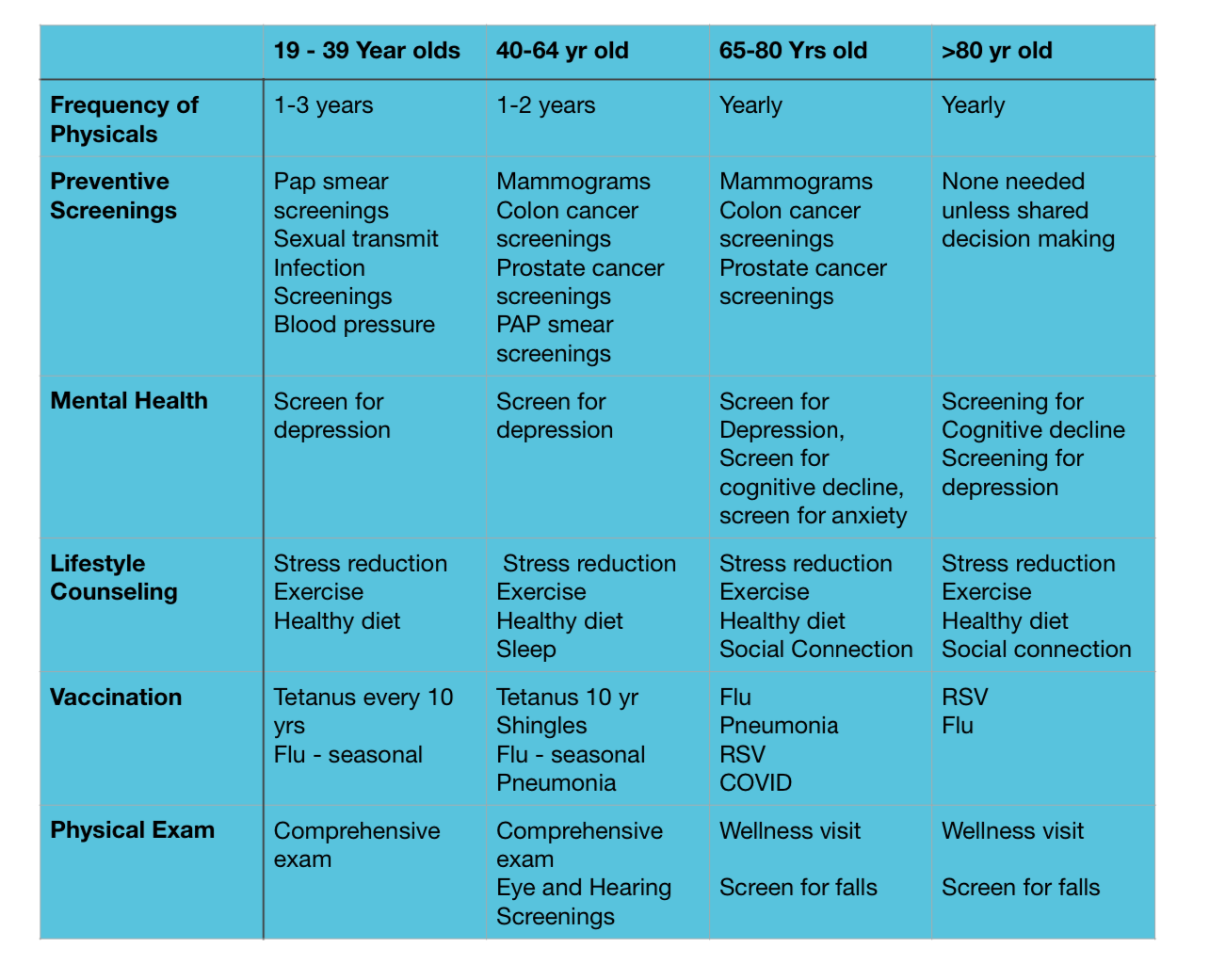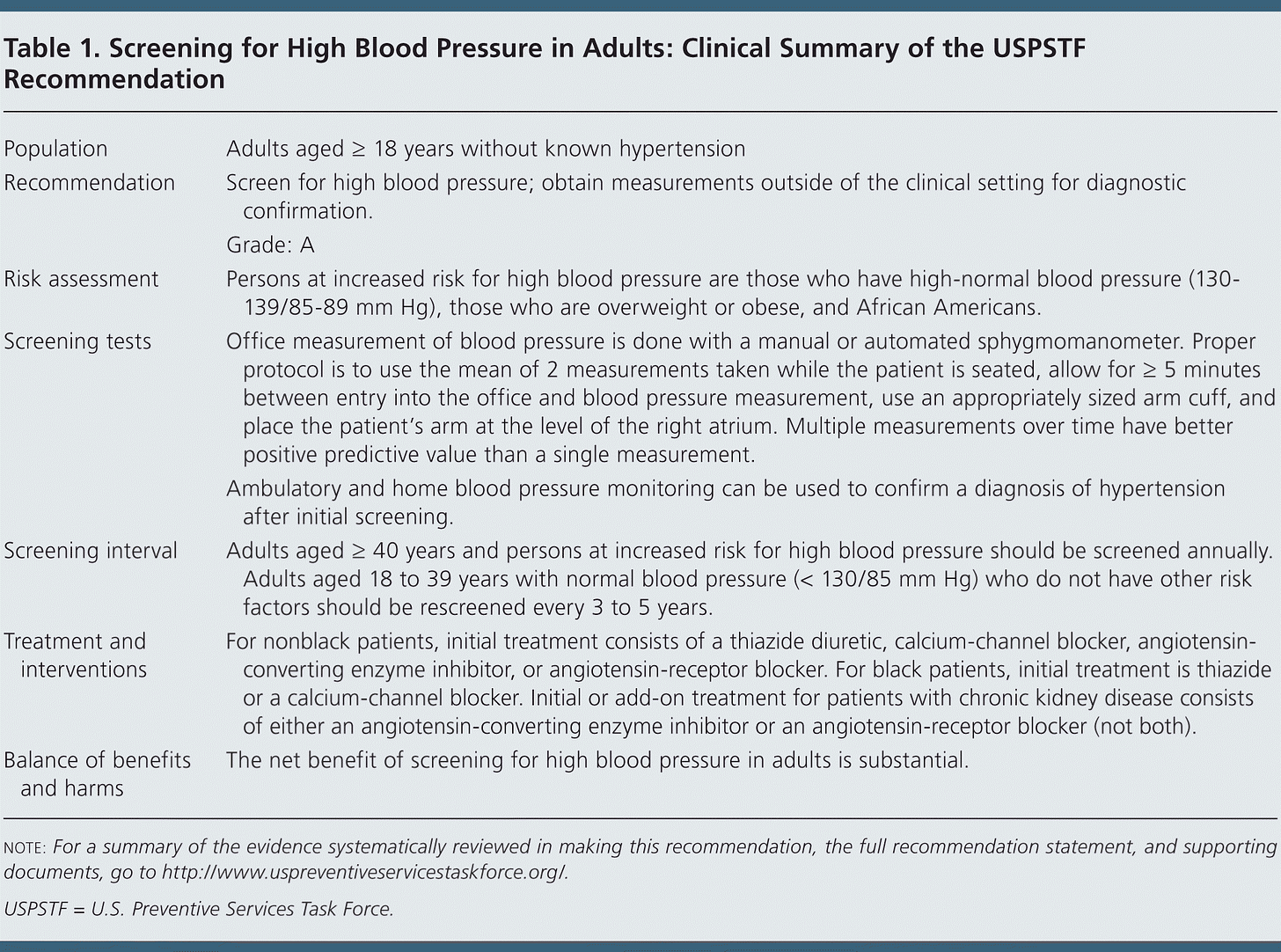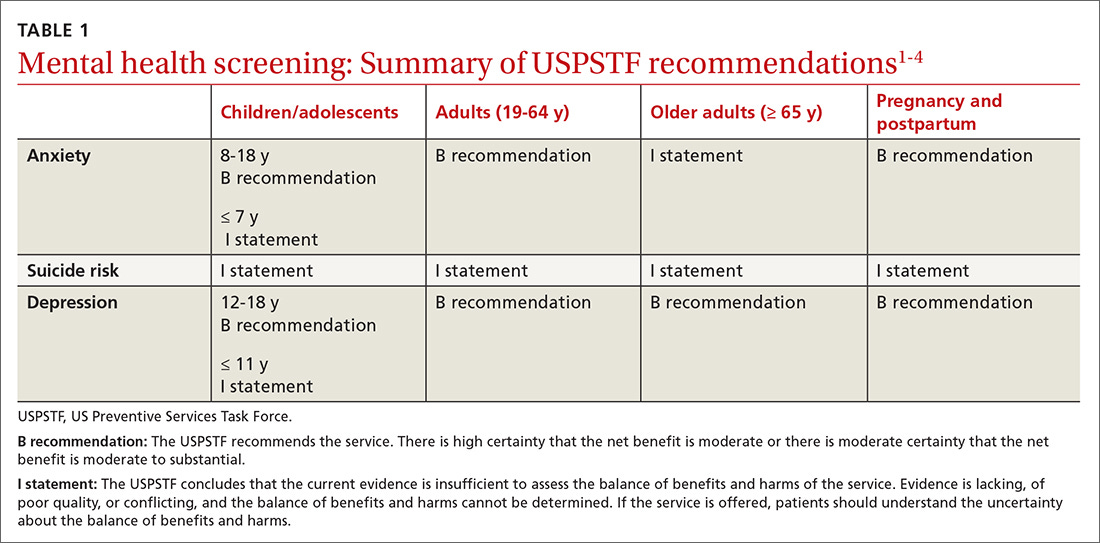Doctor's Heart Series Chapter 23: Preventive(Physicals)Medical Visits - Part 2
A Comprehensive Framework for Health Screening and Prevention.
As in previous chapter 17(Part 1) focused on on screening for cancer and infectious diseases, now focus then shifts to reviewing essential guidelines provided by the U.S. Preventive Services Task Force (USPSTF) on screening for its in-depth look at preventing and screening for cardiovascular, metabolic, and mental health disorders. Below is the USPSTF grading system used to evaluate the recommendation to screen the mass population. All insurance companies honor these recommendations.
Cardiovascular screenings :
Screening for Blood pressure:
Cardiology screenings start with the fundamental step of measuring blood pressure. As I've highlighted in the longevity series(Chapter 9), blood pressure is a frequently overlooked, underdiagnosed, and undertreated issue. Keeping blood pressure below 130/80 has shown the best outcomes. Regular blood pressure checks are a crucial part of preventing many diseases, as I've discussed before. I'll continue to emphasize this, even if it means repeating myself, because this widespread problem is too important to ignore.
According to the USPS Task Force, screening for high blood pressure is supported by Grade A evidence. It is recommended that individuals over the age of 18 undergo screening for high blood pressure. For individuals aged 18-39, the screening should occur every 3 years, while for those over 40, it should take place annually. The benefits of screening for high blood pressure are significant.
Cholesterol screening:
Lipid testing is a standard procedure for adults and is crucial in ruling out atherosclerotic disease (plaque buildup). This testing is essential for all adults and provides reassurance about our heart health. As I have detailed in various chapters, it is crucial to consider coronary scans when necessary, as they can offer additional insights into heart disease evaluation. Abnormal lipid levels can indicate the presence of atherosclerotic disease of the heart and larger vessels.
AAA Screening ( Abdominal Aortic Aneurysm)
Evidence supports AAA screening as a one-time test for individuals with a history of smoking for men aged > 65. This is supported by grade B evidence. It is not recommended for women and non-smoking men.
Screening for Carotid Artery Stenosis:
When considering screening for carotid artery stenosis, it's important to take into account the individual's history of atherosclerosis and high blood pressure. While routine screening may not be recommended, it could be necessary for these specific cases.
Screening for Coronary Calcium:
South Asians often have high levels of certain blood cholesterol traits, such as low HDL, elevated non-HDL, elevated Apo B, and elevated Lpa. This population has the highest mortality rate among patients under 50. Educating and treating them as if they already have the disease is crucial, and providing personalized care to serve the population better.
Metabolic screening and prevention and others :
Screening For Metabolic syndrome
Metabolic syndrome is a cluster of conditions that increase the risk of heart disease, stroke, and type 2 diabetes. It includes elevated blood pressure, hypertriglyceridemia (high levels of triglycerides in the blood), low HDL cholesterol (the "good" cholesterol), abdominal obesity (excess fat around the waist), and increased fasting blood sugar levels. These factors together can lead to insulin resistance and cardiovascular complications. Managing metabolic syndrome involves lifestyle changes such as weight loss, improved diet, regular exercise, and sometimes medication to address specific risk factors. Certain groups are much more amenable to the disease process. Early recognition and treatment in these groups are paramount to preventing or reversing disease during early onset.
Screening for Obesity
Checking Body Mass Index (BMI) during every medical visit is not just a routine, it's a crucial practice, especially in a country where more than 70% of the population is overweight or obese. Obesity is a significant health concern in the United States, making routine BMI assessments vital for early intervention. According to the BMI scale, individuals with a BMI greater than 30 are classified as obese, and those with a BMI greater than 25 are considered overweight. However, these thresholds are different for Asian populations, where a BMI above 27 is categorized as obese and over 23 as overweight. It helps physicians detect weight-related health risks early and implement appropriate interventions for better health outcomes.
Screening for Diabetes Type 2
This image provides a summary of the U.S. Preventive Services Task Force (USPSTF) recommendations for screening for prediabetes and type 2 diabetes in adults aged 35 to 70 who are overweight or obese. The screening applies to nonpregnant adults without symptoms of diabetes. The critical change is that the starting age for screening has been lowered from 40 to 35 years. The process involves assessing risk through BMI and fasting plasma glucose or HbA1c screening. The recommendation is for screening every three years if initial tests are standard and additional interventions are suggested for those with higher BMIs.
Screening for Osteoporosis
The USPSTF recommends screening for osteoporosis with bone measurement testing to prevent osteoporotic fractures in women who are 65 years of age and older. The task force also recommends screening for osteoporosis with bone measurement testing to prevent osteoporotic fractures in postmenopausal women younger than 65 who are at increased risk of osteoporosis, as determined by a formal clinical risk assessment tool.
Mental Disorders / Brain disorders :
The U.S. Preventive Services Task Force (USPSTF) provides recommendations for mental health screenings based on age groups and during pregnancy/postpartum. For anxiety, it suggests screening children aged 8-18 and adults aged 19-64 with a "B recommendation," indicating moderate to substantial evidence for the benefit of screening. For depression, it recommends screening children aged 12-18, adults, older adults, and during pregnancy/postpartum, all with a "B recommendation."
This guidance emphasizes the need for targeted mental health screenings based on age and condition and underscores the ongoing need for further research in certain populations.
Cognitive assessment in the elderly is highly individualized. It's important to note that it's not recommended for all adults above 65, but Medicare does allow these tests to diagnose any issues with cognition. Understanding the individual needs of our patients is crucial in providing empathetic care, even when there are not many treatments for forgetfulness at this time.
Conclusion:
I have summarized the chart above based on the age group for easier understanding. The provided text emphasizes the importance of preventive healthcare, early disease detection, and regular screenings as critical components in promoting longevity and improving health outcomes. It highlights how, at every age, there are key health interventions such as cancer screenings, blood work, and mental health evaluations. These preventive measures aim to detect issues like cancer or metabolic diseases early, allowing for timely treatment and improving quality of life. Importantly, regular check-ups, whether annual or biannual, provide a sense of security and confidence by identifying chronic conditions before they lead to significant health problems.
The table outlined illustrates how healthcare priorities evolve with age. Younger individuals (19-39 years) focus on sexual health, blood pressure, and depression screenings, while middle-aged adults (40-64 years) emphasize cancer screenings (e.g., mammograms, colon, and prostate screenings). For older adults (65-80 years and beyond), screenings for cognitive decline, mental health, and falls become essential. However, what remains constant for all age groups is the invaluable support and care provided by healthcare professionals through lifestyle counseling, which focuses on stress reduction, exercise, and a healthy diet. Vaccinations also shift focus with age, highlighting protection against flu, pneumonia, and RSV in older populations. Ultimately, the message encourages active health management through regular medical check-ups and preventive care for a longer, healthier life.
By getting a yearly physical and discussing the Pentad (preventive cardiovascular, metabolic, mental health, oncology, and infectious disease) with your doctor, you are taking a significant step toward self-care. These actions and other preventive tests, like yearly blood work, provide us with crucial health information. Healthcare is rapidly evolving, with significant changes in diagnostics, technology, AI, and other areas. Our ultimate aim is to age healthily and be disease-free, focusing on quality years and long-term health.
Suman Manchireddy MD FACP FHM,
Internal Medicine, Leesburg, VA.
Email : Care@ReliantMD.com
Disclaimer: This is purely informational and educational purposes only, seek medical advise prior to starting any testing or treatment regimen. The data presented here is researched extensively and has been condensed for a broader audience.
References:
Blood pressure in adults
2 . Lipid Screening
3. AAA Screening
4. Carotid Artery stenosis screening
5.Diabetes Screening
Mental health Screening.











